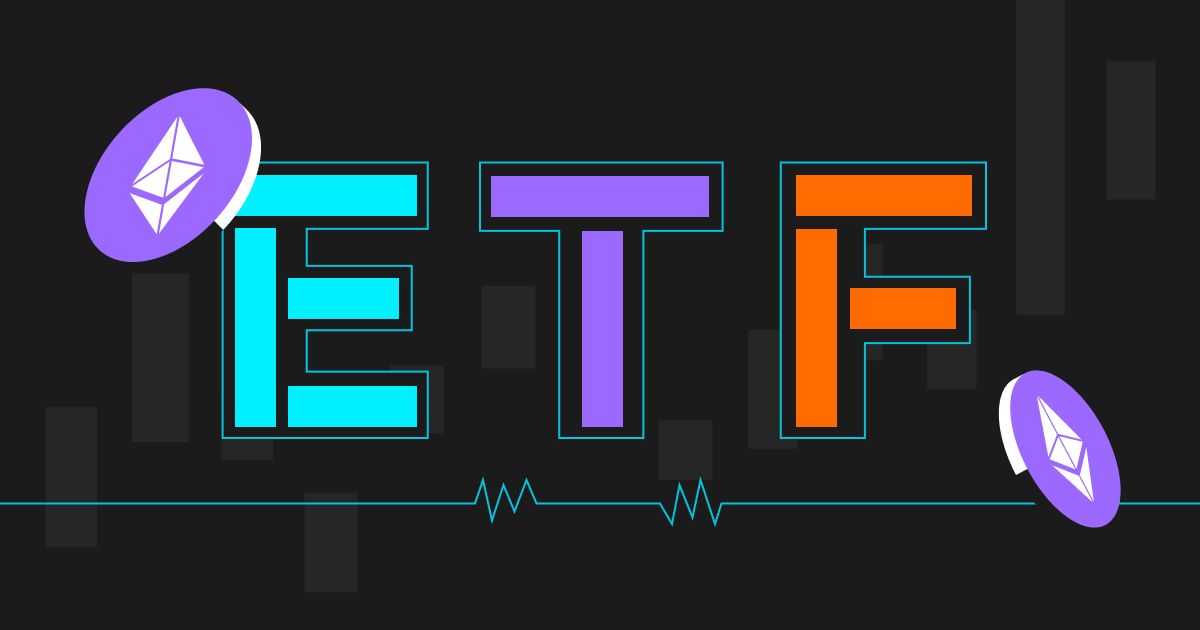
An Analysis of The Launch of Spot ETH ETFs in the US
The Road to Approval
For years, the idea of a spot ETH ETF has been a topic of great interest and debate among investors, regulators, and financial institutions. An ETF is a type of investment fund that trades on stock exchanges, much like individual stocks. Spot ETFs are particularly sought after because they track the actual price of the underlying asset—in this case, ETH—rather than relying on futures contracts or other financial instruments.
The push for a spot ETH ETF began gaining momentum several years ago. Advocates argued that such a fund would offer a more direct and accessible way for investors to gain exposure to ETH. However, the path was fraught with challenges. The U.S. Securities and Exchange Commission (SEC) and other regulatory bodies were cautious about approving these funds due to concerns about market manipulation, security, and the overall volatility of the cryptocurrency market.
The SEC had previously rejected several proposals for spot Bitcoin ETFs, citing similar concerns. The regulatory environment for cryptocurrencies was still evolving, and there was a significant amount of skepticism regarding their stability and security. Many believed that the approval of a spot ETH ETF would follow a similar pattern.
However, in mid-2024, there was a noticeable shift. Increased institutional interest and advances in regulatory frameworks led to growing optimism. After months of negotiations, adjustments, and presentations, the SEC and other regulatory bodies approved several spot ETH ETFs. This approval marked a significant milestone in the cryptocurrency world and opened the door for these funds to begin trading.
Companies like Grayscale, Fidelity, and BlackRock played a crucial role in pushing for approval. They argued that the market was ready for ETH ETFs and that the benefits outweighed the risks. Their persistent efforts, coupled with growing institutional interest in ETH, eventually led to positive regulatory developments.
To find out more about the early hurdles on the road of spot ETH ETF approval in the US, please read: Spot ETH ETFs A Rocky Road to Regulatory Acceptance
The Launch and Initial Trading Days
The launch of the spot ETH ETFs was highly anticipated. On July 22, 2024, the ETFs officially began trading on U.S. stock exchanges. The excitement was palpable, as investors were eager to see how these new financial products would perform.
First Day of Trading
The launch of the spot ETH ETFs on July 23, 2024, was met with a mix of enthusiasm and caution. The initial trading volumes were impressive, with the ETFs generating about $1.05 billion in cumulative trading volume on their first day. This was a strong indicator of market interest and confidence.
However, the excitement was tempered by some concerns. The launch coincided with broader market volatility and the release of significant amounts of Bitcoin from the Mt. Gox exchange, which influenced market sentiment.
Grayscale’s ETH Trust (ETHE) was the standout performer with about $492 million in trading volume, accounting for approximately 52% of the total trading volume. Other notable performers included BlackRock’s iShares ETH Trust (ETHA), which traded $256 million, and Fidelity’s ETH Fund (FETH), which saw $113 million in volume. Despite the initial excitement, the net flows were somewhat mixed. The ETFs recorded $106.7 million in net inflows, suggesting that investors were cautiously optimistic.

Indeed, the positive trend did not last long.
Second Day of Trading
The second day of trading brought a dramatic turn of events. The spot ETH ETFs saw $951 million in trading volume, reflecting continued strong interest. However, there were significant outflows, with the funds experiencing $113.3 million in net outflows.
The primary factor contributing to these outflows was the substantial selling from Grayscale’s ETH Trust (ETHE), which saw $326.9 million in outflows. This fund, having recently transitioned to a spot ETF, faced significant selling pressure from investors. Grayscale’s ETHE alone accounted for the bulk of the outflows, highlighting the volatility and uncertainty surrounding new financial products in the crypto space.
Despite the outflows from Grayscale, other funds like Fidelity’s FETH and Bitwise’s BITW managed to attract significant inflows, with $74.5 million and $29.6 million respectively. This mixed sentiment suggested that while some investors were pulling back, others remained optimistic about the potential of ETH ETFs. The broader cryptocurrency market was also experiencing volatility, which likely contributed to the outflows.

Source: FarSide Investors
The Impact on the Crypto Market
The launch of spot ETH ETFs had a noticeable impact on the broader cryptocurrency market.
Market Reaction and Price Movements
Initially, the enthusiasm surrounding the ETH ETFs seemed to be driving positive sentiment in the market. However, the volatility and subsequent outflows had mixed effects. ETH’s price fell by approximately 8% following the second day of trading, stabilizing around $3,158. This decline mirrored a broader trend of market uncertainty and sell-offs.

Source: TradingView
Bitcoin also experienced a downturn. BTC fell by 3.7% over the same period. The sell-off in cryptocurrencies can often be attributed to various factors, including market sentiment, macroeconomic events, and large asset movements.
Comparison with Bitcoin ETFs
The performance of ETH ETFs was closely watched in comparison to Bitcoin ETFs. Bitcoin ETFs had previously experienced their own set of challenges, including periods of outflows and market reactions. The comparison highlighted some similarities and differences in how investors were responding to the two types of ETFs.
ETH’s price fell by 8.24% over a 24-hour period following the launch, while Bitcoin also saw a decline but to a lesser extent. This indicated that ETH, being a newer and potentially more volatile asset, was more susceptible to sharp price movements and market sentiment.
Broader Market Trends
The launch of ETH ETFs coincided with other significant market events. For instance, the total cryptocurrency market cap dipped by 2.2% to $2.5 trillion, reflecting broader market trends.
On a more positive note, the stablecoin market saw growth. The total stablecoin market cap increased to $156 billion, breaking a three-month stagnation. This growth is seen as a sign of increasing user engagement and activity in DeFi.

Source: Artemis
Disclaimer: The opinions expressed in this article are for informational purposes only. This article does not constitute an endorsement of any of the products and services discussed or investment, financial, or trading advice. Qualified professionals should be consulted prior to making financial decisions.



